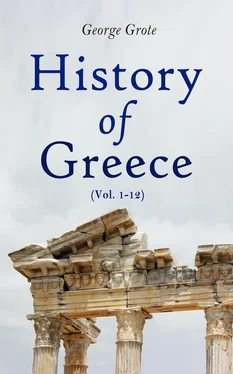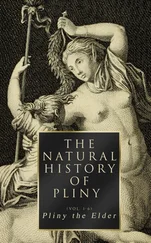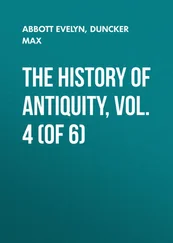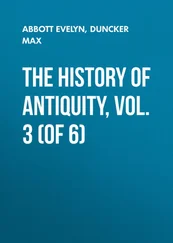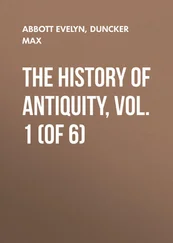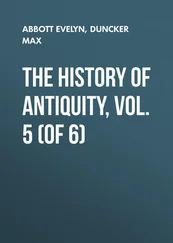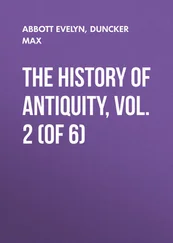Such is a brief sketch of the temple legend of Eleusis, set forth at length in the Homeric Hymn to Dêmêtêr. It is interesting not less as a picture of the Mater Dolorosa (in the mouth of an Athenian, Dêmêtêr and Persephonê were always the Mother and Daughter, by excellence), first an agonized sufferer, and then finally glorified,—the weal and woe of man being dependent upon her kindly feeling,—than as an illustration of the nature and growth of Grecian legend generally. Though we now read this Hymn as pleasing poetry, to the Eleusinians, for whom it was composed, it was genuine and sacred history. They believed in the visit of Dêmêtêr to Eleusis, and in the mysteries as a revelation from her, as implicitly as they believed in her existence and power as a goddess. The Eleusinian psalmist shares this belief in common with his countrymen, and embodies it in a continuous narrative, in which the great goddesses of the place, as well as the great heroic families, figure in inseparable conjunction. Keleos is the son of the Eponymous hero Eleusis, and his daughters, with the old epic simplicity, carry their basins to the well for water. Eumolpus, Triptolemus, Dioklês, heroic ancestors of the privileged families who continued throughout the historical times of Athens to fulfil their special hereditary functions in the Eleusinian solemnities, are among the immediate recipients of inspiration from the goddess; but chiefly does she favor Metaneira and her infant son Dêmophoôn, for the latter of whom her greatest boon is destined, and intercepted only by the weak faith of the mother. Moreover, every incident in the Hymn has a local coloring and a special reference. The well, overshadowed by an olive-tree near which Dêmêtêr had rested, the stream Kallichorus and the temple-hill, were familiar and interesting places in the eyes of every Eleusinian; the peculiar posset prepared from barley-meal with mint was always tasted by the Mysts (or communicants) after a prescribed fast, as an article in the ceremony,—while it was also the custom, at a particular spot in the processional march, to permit the free interchange of personal jokes and taunts upon individuals for the general amusement. And these two customs are connected in the Hymn with the incidents, that Dêmêtêr herself had chosen the posset as the first interruption of her long and melancholy fast, and that her sorrowful thoughts had been partially diverted by the coarse playfulness of the servant-maid Iambê. In the enlarged representation of the Eleusinian ceremonies, which became established after the incorporation of Eleusis with Athens, the part of Iambê herself was enacted by a woman, or man in woman’s attire, of suitable wit and imagination, who was posted on the bridge over the Kephissos, and addressed to the passers-by in the procession, 92especially the great men of Athens, saucy jeers, probably not less piercing than those of Aristophanês on the stage. The torch-bearing Hekatê received a portion of the worship in the nocturnal ceremonies of the Eleusinia: this too is traced, in the Hymn, to her kind and affectionate sympathy with the great goddesses.
Though all these incidents were sincerely believed by the Eleusinians as a true history of the past, and as having been the real initiatory cause of their own solemnities, it is not the less certain that they are simply mythes or legends, and not to be treated as history, either actual or exaggerated. They do not take their start from realities of the past, but from realities of the present, combined with retrospective feeling and fancy, which fills up the blank of the aforetime in a manner at once plausible and impressive. What proportion of fact there may be in the legend, or whether there be any at all, it is impossible to ascertain and useless to inquire; for the story did not acquire belief from its approximation to real fact, but from its perfect harmony with Eleusinian faith and feeling, and from the absence of any standard of historical credibility. The little town of Eleusis derived all its importance from the solemnity of the Dêmêtria, and the Hymn which we have been considering (probably at least as old as 600 B. C.) represents the town as it stood before its absorption into the larger unity of Athens, which seems to have produced an alteration of its legends and an increase of dignity in its great festival. In the faith of an Eleusinian, the religious as well as the patriotic antiquities of his native town were connected with this capital solemnity. The divine legend of the sufferings of Dêmêtêr and her visit to Eleusis was to him that which the heroic legend of Adrastus and the Siege of Thêbes was to a Sikyonian, or that of Erechtheus and Athênê to an Athenian grouping together in the same scene and story the goddess and the heroic fathers of the town. If our information were fuller, we should probably find abundance of other legends respecting the Dêmêtria: the Gephyræi of Athens, to whom belonged the celebrated Harmodios and Aristogeitôn, and who possessed special Orgies of Dêmêtêr the Sorrowful, to which no man foreign to their Gens was ever admitted, 93would doubtless have told stories not only different but contradictory; and even in other Eleusinian mythes we discover Eumolpus as king of Eleusis, son of Poseidôn, and a Thracian, completely different from the character which he bears in the Hymn before us. 94Neither discrepancies nor want of evidence, in reference to alleged antiquities, shocked the faith of a non-historical public. What they wanted was a picture of the past, impressive to their feelings and plausible to their imagination; and it is important to the reader to remember, while he reads either the divine legends which we are now illustrating or the heroic legends to which we shall soon approach, that he is dealing with a past which never was present,—a region essentially mythical, neither approachable by the critic nor mensurable by the chronologer.
The tale respecting the visit of Dêmêtêr, which was told by the ancient Gens, called the Phytalids, 95in reference to another temple of Dêmêtêr between Athens and Eleusis, and also by the Megarians in reference to a Dêmêtrion near their city, acquired under the auspices of Athens still further extension. The goddess was reported to have first communicated to Triptolemus at Eleusis the art of sowing corn, which by his intervention was disseminated all over the earth. And thus the Athenians took credit to themselves for having been the medium of communication from the gods to man of all the inestimable blessings of agriculture, which they affirmed to have been first exhibited on the fertile Rharian plain near Eleusis. Such pretensions are not to be found in the old Homeric hymn. The festival of the Thesmophoria, celebrated in honor of Dêmêtêr Thesmophoros at Athens, was altogether different from the Eleusinia, in this material respect, as well as others, that all males were excluded, and women only were allowed to partake in it: the surname Thesmophoros gave occasion to new legends in which the goddess was glorified as the first authoress of laws and legal sanctions to mankind. 96This festival, for women apart and alone, was also celebrated at Paros, at Ephesus, and in many other parts of Greece. 97
Altogether, Dêmêtêr and Dionysos, as the Grecian counterparts of the Egyptian Isis and Osiris, seem to have been the great recipients of the new sacred rites borrowed from Egypt, before the worship of Isis in her own name was introduced into Greece: their solemnities became more frequently recluse and mysterious than those of the other deities. The importance of Dêmêtêr to the collective nationality of Greece may be gathered from the fact that her temple was erected at Thermopylæ, the spot where the Amphiktyonic assemblies were held, close by the temple of the Eponymous hero Amphiktyôn himself, and under the surname of the Amphiktyonic Dêmêtêr. 98
Читать дальше
